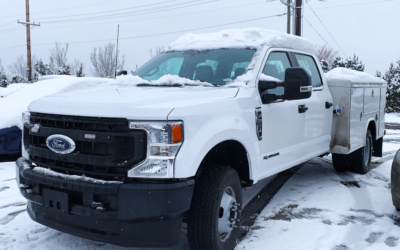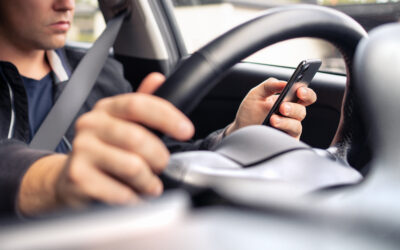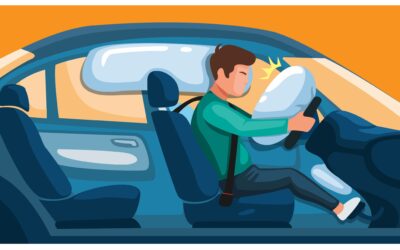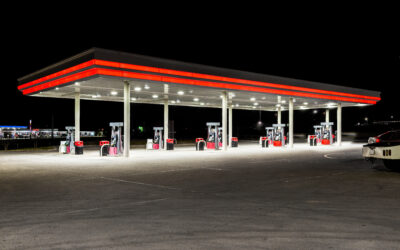Top 10 Cities with the Most Traffic in the United States
The modern world will always remember 2020 as the year we experienced one of the worst pandemics in history. COVID-19 affected every aspect of our lives, including personal transportation. With an overwhelming number of employees working from home, educational institutes delivering remote learning, and the closure of restaurants, bars, stores, and theatres, we experienced a significant decline in traffic in major cities in the US.
Recently, INRIX, a transportation analytics company in Kirkland, WA, released its 2020 Global Traffic Scorecard. It revealed that the number of miles driven in the US last year dropped by a whopping 82% from 2019. Moreover, unlike the 99 hours in 2019, commuters only lost 26 hours in traffic in 2020. Collisions were also down by 30%. However, interestingly enough, traffic fatalities increased by 8% since motorists took advantage of traffic-free roads and highways by driving recklessly and way over the posted speed limits.
Bob Pishue, a transportation analyst at INRIX, rightly said that COVID-19 transformed the way people moved and commuted in 2020. Moreover, government restrictions and lockdowns amid the continued spread of the virus led to swift changes in the way people traveled. Morning commute in cities throughout the world was done without the usual delays because of less traffic as many people were not traveling to schools, offices, shopping centers, or other public places.
Traffic in Major US Cities
New York led the list of major cities that experience traffic congestion in the US, with commuters losing an average of 100 hours to traffic congestion last year. While that might appear to be pretty bad, it’s 28% less than the hours lost in 2019! If you consider the state of traffic in major cities worldwide, NYC ranks behind Bogota, Columbia, which experienced a loss of an average of 133 hours to traffic, and Bucharest, Romania, which experienced 134 lost hours per commuter. Meanwhile, Philadelphia and Chicago placed fifth and seventh in the global traffic tally by INRIX.
Additionally, travel from outlying to district or downtown areas in major urban cities also saw a decline by an average of 42% last year. Portland, Oregon, experienced the most significant dip of 66% in city center trips, closely followed by San Francisco, Washington DC, Detroit, and Boston, which experienced drops of 64%, 60%, 59%, and 56%, respectively. This marked reduction in traffic to downtown areas was due to the spread of the virus and the following government restrictions. The dip in traffic produced varied economic benefits; it enabled essential workers to commute quickly, resulted in quicker and more reliable deliveries, and streamlined freight movement.
Top Ten Traffic-Clogged Major Cities in the US
Here are the top ten metropolitans that experience the most traffic in the US:
- New York City, NY – loss of 100 hours per commuter (-28%)
- Philadelphia, PA – loss of 94 hours per commuter (-34%)
- Chicago, IL – loss of 86 hours per commuter (-40%)
- Boston, MA – loss of 48 hours per commuter (-68%)
- Los Angeles, CA – loss of 45 hours per commuter (-56%)
- San Francisco, CA – loss of 47 hours per commuter (-51%)
- New Orleans, LA – loss of 42 hours per commuter (-47%)
- Houston, TX – loss of 35 hours per commuter (-56%)
- Miami, FL – loss of 35 hours per commuter (-57%)
- Dallas, TX – loss of 34 hours per commuter (-46%)
The Most Congested US Roads in 2020
Chicago’s Eisenhower Expressway heading into downtown from I-290/294 to the I-90/94 exchange led the list of the busiest stretches of road with the most traffic in the US. Even though the delay experienced was only 10 minutes at peak time due to the pandemic.
Here are the US roads that saw the most traffic in 2020:
- Eisenhower Expressway in Chicago (from I-290/294 to I-90/94 Interchange)
- Brooklyn Queens Expressway in New York City (from I-495 to Tillary Street)
- Cross Bronx Expressway in New York City (from Bronx River Parkway to Washington Bridge)
- Brooklyn Queens Expressway in New York City, (from 4th Ave/38th St to Hicks St/Old Fulton St)
- I-680 in San Francisco (from Mission Boulevard to Scotts Corner)
- CA-4 in San Francisco (from I-680 to Willow Pass Road)
- Connecticut Turnpike in Stamford (from Saugatuck Avenue to Indian Field Road)
- US-101 in Los Angeles (from New Hampshire Avenue to 110 Interchange)
- S La Cienega Boulevard in Los Angeles (from I-405 to West Adams)
- I-75 in Atlanta (from Langford Parkway to Williams St/Peachtree Pl)
How to Deal with Traffic Congestion in Major Cities
In 2019, the national average lost time for drivers due to traffic was more than $88 billion! This staggering figure just goes to highlight how much of a problem traffic congestion has been for years now. It’s why responsible government bodies must find ways to tackle this problem.
The best way to deal with and reduce traffic in major cities is to figure out the reasons behind the congestion. The first possible explanation is that many urban and metropolitan areas are growing faster than the road network in those areas. The demand for toad travel far surpasses the availability of roadways. In some cities, even building public transport might not be enough given how quickly the urban population is growing.
Here are some other reasons for traffic congestion in major cities:
- Construction work, which results in lane closures or slow driving
- Motor vehicle accidents, which can block one or more traffic lanes depending on their severity
- Events that draw large crowds
- Broken down vehicles on highways
- Rough weather and unforeseen emergencies
While we cannot control extraneous circumstances, such as inclement weather, we can certainly reduce the rate of accidents by promoting safe driving campaigns and training. We can also tackle the issue of vehicle breakdowns by offering discounted vehicle maintenance programs across the country.
Moreover, to address traffic in major cities in the post-COVID era, the local governments or private entities can establish more carpooling programs to reduce the number of vehicles on the road. Some governments are also looking at congestion tolling to reduce traffic, which will increase the costs attached to driving and result in fewer cars on urban streets.
However, since the most obvious reason for traffic congestion is the population growth – more people result in more vehicles – we cannot offset the increase in traffic altogether. It’s a long and winding road that requires comprehensive strategizing and revising old policies based on the changing traffic landscape.
Sources:
https://www.usnews.com/news/cities/articles/10-cities-with-the-worst-traffic-in-the-us





